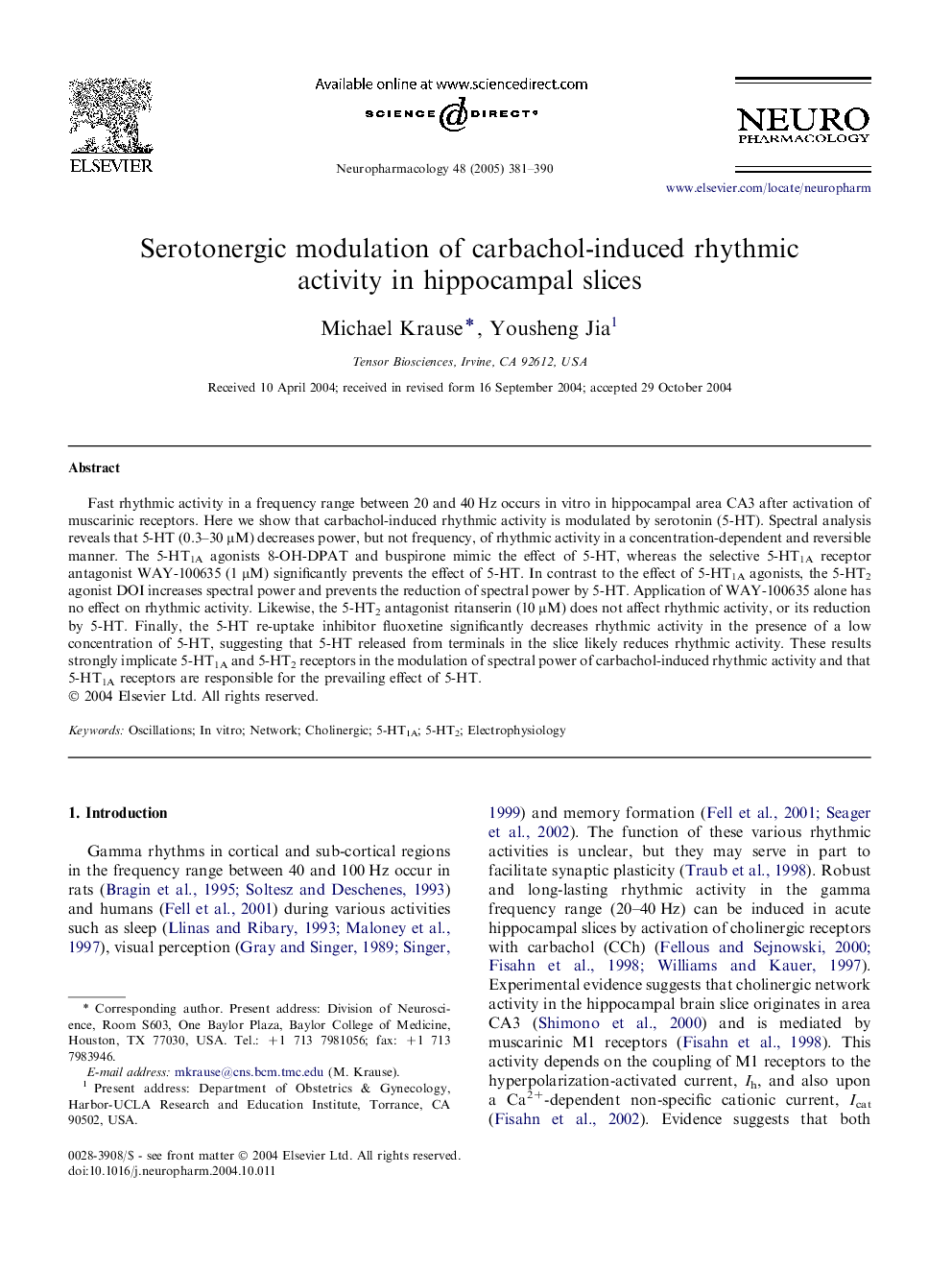| Article ID | Journal | Published Year | Pages | File Type |
|---|---|---|---|---|
| 8998246 | Neuropharmacology | 2005 | 10 Pages |
Abstract
Fast rhythmic activity in a frequency range between 20 and 40 Hz occurs in vitro in hippocampal area CA3 after activation of muscarinic receptors. Here we show that carbachol-induced rhythmic activity is modulated by serotonin (5-HT). Spectral analysis reveals that 5-HT (0.3-30 μM) decreases power, but not frequency, of rhythmic activity in a concentration-dependent and reversible manner. The 5-HT1A agonists 8-OH-DPAT and buspirone mimic the effect of 5-HT, whereas the selective 5-HT1A receptor antagonist WAY-100635 (1 μM) significantly prevents the effect of 5-HT. In contrast to the effect of 5-HT1A agonists, the 5-HT2 agonist DOI increases spectral power and prevents the reduction of spectral power by 5-HT. Application of WAY-100635 alone has no effect on rhythmic activity. Likewise, the 5-HT2 antagonist ritanserin (10 μM) does not affect rhythmic activity, or its reduction by 5-HT. Finally, the 5-HT re-uptake inhibitor fluoxetine significantly decreases rhythmic activity in the presence of a low concentration of 5-HT, suggesting that 5-HT released from terminals in the slice likely reduces rhythmic activity. These results strongly implicate 5-HT1A and 5-HT2 receptors in the modulation of spectral power of carbachol-induced rhythmic activity and that 5-HT1A receptors are responsible for the prevailing effect of 5-HT.
Related Topics
Life Sciences
Neuroscience
Behavioral Neuroscience
Authors
Michael Krause, Yousheng Jia,
